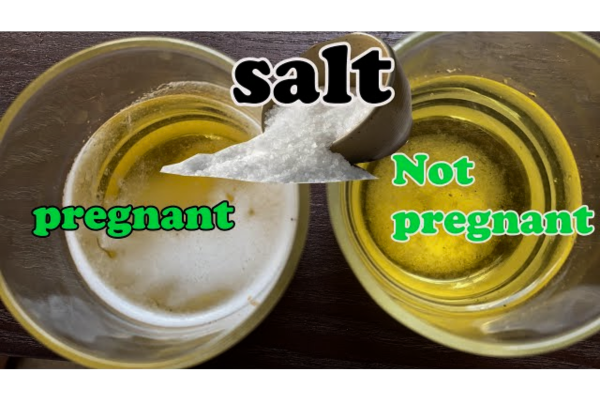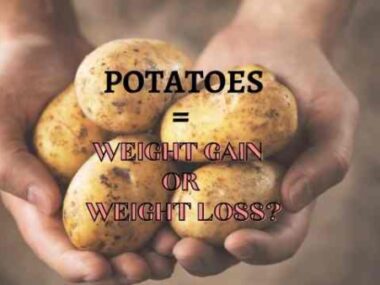When it comes to early pregnancy detection, many women turn to at-home pregnancy tests for answers. While traditional over-the-counter tests are readily available, a variety of DIY methods have gained popularity as well. One such method is the “Salt Pregnancy Test,” which has caught the attention of curious individuals seeking an alternative way to confirm pregnancy. In this blog post, we will delve into the details of the salt pregnancy test, separating fact from fiction and providing a comprehensive understanding of its accuracy and reliability. Additionally, we will showcase some positive pictures associated with this test and explore its potential limitations.
Understanding the Salt Pregnancy Test
The salt pregnancy test is a DIY method that involves the use of common household ingredients – salt and urine – to detect the presence of the human chorionic gonadotropin (hCG) hormone, which is produced during pregnancy. Proponents of this test claim that when urine containing hCG is mixed with salt, a chemical reaction occurs, resulting in a noticeable change in the mixture’s appearance.
Read >>> What Liquid Turns a Pregnancy Test Positive
Performing the Test
To conduct the salt pregnancy test, follow these steps:
- Gather your materials: You’ll need a clean container, table salt, and a fresh urine sample (preferably collected in the morning).
- Prepare the mixture: Place a small amount of salt in the container and add a few drops of your urine sample.
- Observe the reaction: Watch for any changes in the mixture, such as clumping, frothing, fizzing, or color alterations.
Interpreting the Results
While proponents of the salt pregnancy test claim that certain reactions indicate a positive result, it’s important to note that there is no scientific evidence to support its accuracy. A positive result may be indicated by changes like curdling, foaming, or fizzing. However, these changes could also be attributed to the interaction between salt and other components present in urine, leading to false positives.
Read >>> The Miracle of Pregnancy after Ablation: What You Need to Know
Positive Pictures and Their Implications
On the internet, you may come across images showcasing salt pregnancy test “positive results.” These pictures often depict a mixture with a cloudy or frothy appearance, which some individuals interpret as evidence of pregnancy. It’s crucial to approach these images with skepticism, as they lack scientific validation. Factors such as lighting, mixing techniques, and the concentration of salt can all contribute to the visual changes observed in these pictures.
Limitations and Considerations
1. Lack of Scientific Validity
The salt pregnancy test has not been scientifically proven to accurately detect pregnancy. Relying solely on this method could lead to inaccurate results and potential confusion.
2. Variability in Results
The reaction between salt and urine can vary greatly depending on factors such as individual differences in urine composition, salt concentration, and environmental conditions.
3. False Positives and Negatives
Even if the salt pregnancy test appears to yield positive results, it is not a reliable indicator of pregnancy. False positives and false negatives are both possible outcomes.
4. Confirmation with Traditional Tests
To confirm pregnancy, it is recommended to use a reliable, FDA-approved home pregnancy test or consult a healthcare professional for accurate and conclusive results.
5. Potential Risks
While the salt pregnancy test is unlikely to cause harm, relying on DIY methods for medical diagnosis may delay appropriate prenatal care or lead to unnecessary anxiety.
Read >>> ICD-10-CM Code for Anemia in Pregnancy
Does salt dissolve in urine during pregnancy?
The chemical reactions that proponents of the salt pregnancy test claim to observe (such as curdling, frothing, or fizzing) are not based on scientific principles and can be influenced by a variety of factors, including the concentration of salt, the pH of the urine, and other compounds present in urine. These factors can lead to visual changes in the mixture, but they do not reliably indicate pregnancy.
If you suspect you might be pregnant, it is recommended to use established and reliable methods of pregnancy detection, such as FDA-approved home pregnancy tests or consulting a healthcare professional. These methods are based on sound scientific principles and have been thoroughly tested for accuracy and reliability.
Conclusion
The salt pregnancy test is a DIY method that has garnered attention due to its simplicity and affordability. However, it is essential to approach this test with caution and critical thinking. While positive pictures associated with the test may intrigue some individuals, they do not substitute for scientifically validated methods of pregnancy detection. When seeking confirmation of pregnancy, it is always advisable to opt for established and approved tests, such as those available at pharmacies, or to consult a healthcare professional. Your health and peace of mind deserve the highest level of accuracy and reliability.
Remember, pregnancy is a significant life event that warrants accurate and trustworthy information. While the salt pregnancy test may seem intriguing, its limitations and lack of scientific support highlight the importance of making informed decisions based on well-established medical knowledge.




